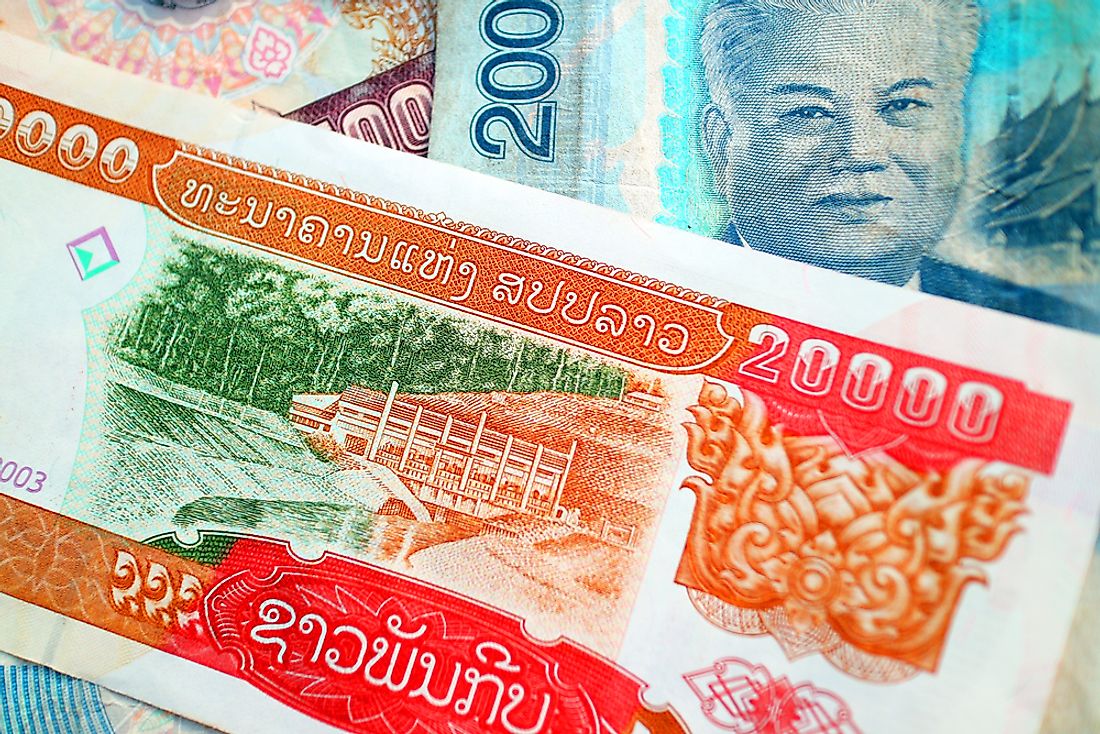What is the Currency of Laos?

Laos is located in the heart of the Indochinese Peninsula. According to the economic complex index (ECI) in 2016, it is the 115th largest economy in the world following its rich mineral and metallurgy industry. The country’s banking sector is one that requires great development in order to strengthen the Lao PDR Kip, which is the country’s official currency denoted as ₭. The currency was first introduced in 1952 to replace the French Piastre which was in circulation. Due to the economic complexities in Laos, and the devaluation of the Kip, many have resulted in using the USD and the Thai Bhat. However, the government is working with the private sector banking system to stabilize the currency and encourage its use within the country. The government is also opening doors to FDI to encourage mining of gold, coal, and copper, which will help the currency to regain its value against the US dollar.
History of Lao Kip
Before the colonization of Laos by the French, the government in Vientiane printed and managed paper money in several denominations including cents and Free Lao kip. After the French takeover of the region, they introduced the French Indochinese piastre, which was replaced by the Kip in 1952. The Royal Kip was in the form of aluminum coins and was in 10, 20, and 50 cents denominations with inscriptions in both French and Lao and a hole in the middle. In 1953, the Institut d'Emission des Etats du Cambodge, du Laos et du Vietnam introduced other banknotes in the denomination of 1, 5, and 100 kip and Piastres. In 1957, the government ruled out the Piastres leaving only the Kip banknotes in circulation. In 1976 when the Pathet took over the country, the Pathet Lao Kip that was being printed in China replaced the Royal Kip. In 1979, the old Pathet were replaced with the current Lao PDR Kip.
Coins
Coins were introduced in Lao in 1980 after 28 years of no coin circulation in the country. The coins were issued in three denominations including 10, 20, and 50 cents. The coins were struck with aluminum with the symbol of the state emblem on the obverse while the reverse had agricultural themes. Currently, coins are not in circulation in Laos following the dissolution of the Soviet Union in 1991 and the high inflation that affected the country.
Banknotes
Banknotes were officially introduced in Laos in 1979 in several denominations including 1, 5, 10, 20, 50 and 100 kips. In 1988, the 500-kip note was added followed by 1000-kip in 1992, 5,000 kip in 1997, 10,000 and 20,000 kip in 2002 and 50,000 in 2006. Following the prolonged inflation that continued to creep into the country, 100,000 kip banknotes were introduced to venerate the 35th anniversary of the establishment of the Laos Republic. The devaluation of the Kip resulted to the adoption of the US dollar and the Thai Bhat but the Bank of Laos distributed the 100,000-kip to encourage nationals to use the national currency. Currently, the minimum denomination in circulation is the 1000-kip bank note. All the banknotes bear the portrait of Kaysone Phomvihane on the obverse.











